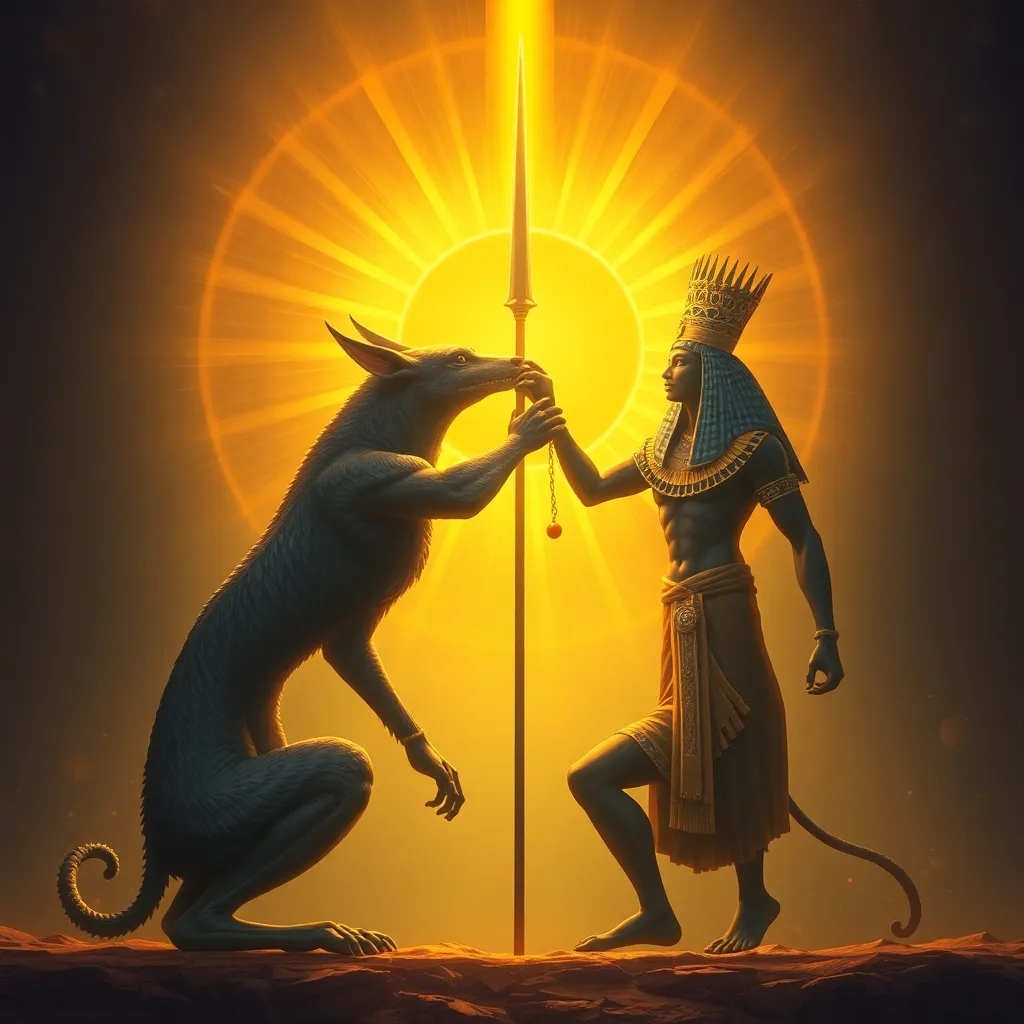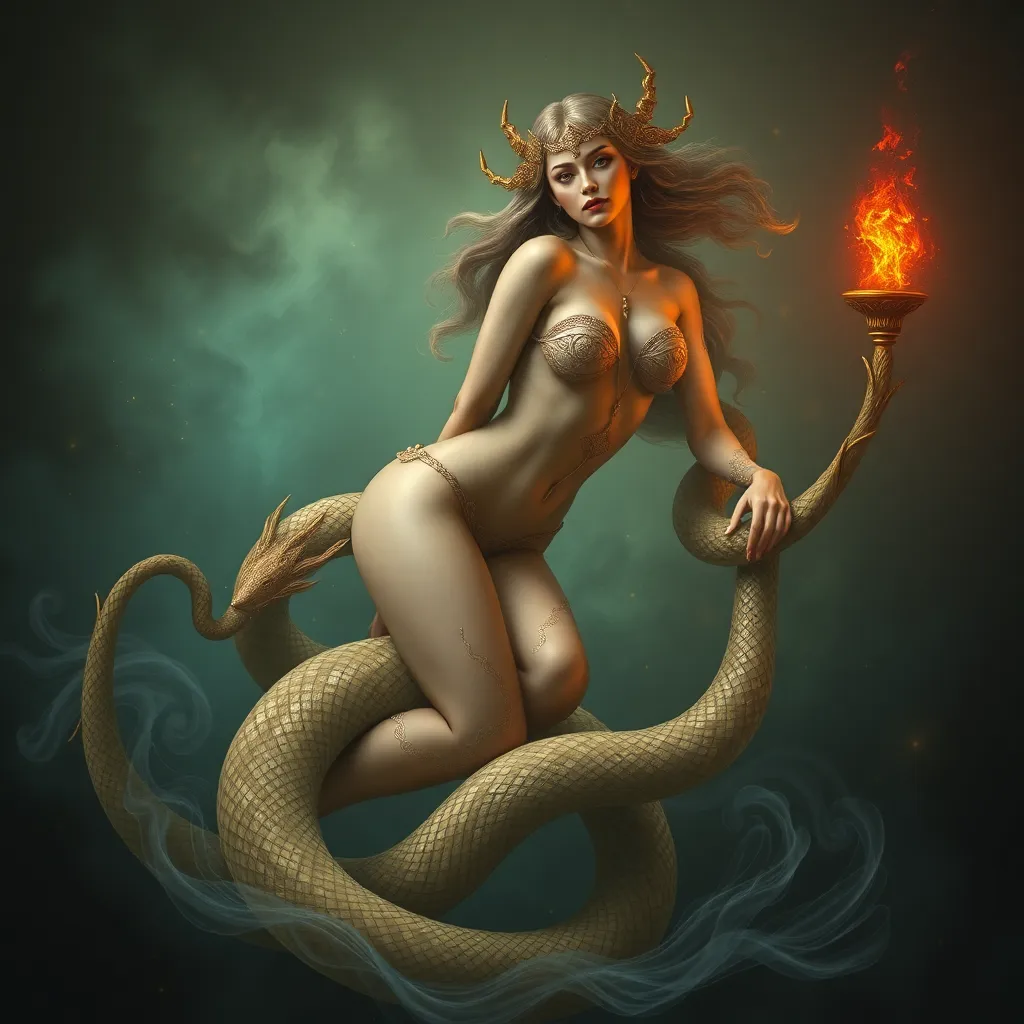Anubis and the Sun God Ra: A Complex Relationship of Power and Balance
I. Introduction
Ancient Egyptian mythology is rich with a tapestry of deities, each embodying different elements of life and death. Among these deities, Anubis and Ra stand out as powerful figures, representing the afterlife and the sun, respectively. Their relationship is pivotal within the framework of Egyptian beliefs, highlighting the intricate balance between mortality and eternity. This article aims to explore the complexities of the relationship between Anubis and Ra, emphasizing their significance in ancient Egyptian spirituality.
II. Background of Anubis
A. Origins and role as the God of the Afterlife
Anubis, often depicted as a man with the head of a jackal, was revered as the god of funerary rites and the afterlife. His origins can be traced back to the early dynastic period of Egypt, where he was associated with the burial of the dead and the protection of souls in the afterlife. Anubis guided the deceased through the underworld and presided over the weighing of the heart ceremony, determining the fate of souls.
B. Symbolism and attributes associated with Anubis
Anubis is rich in symbolism. The jackal, often seen in cemeteries, represents his connection to death and the afterlife. His black skin symbolizes the fertile soil of the Nile, representing rebirth. Attributes associated with him include:
- The Ankh: Symbolizing life.
- The sistrum: An instrument used in rituals.
- The scales: Used in the weighing of the heart against the feather of Ma’at.
C. Anubis’s influence on funerary practices
Anubis played a crucial role in Egyptian funerary practices. He was responsible for embalming the bodies of the deceased and ensuring their safe passage to the afterlife. His presence in tombs and funerary texts underscores his importance in guiding souls and protecting them from malevolent forces.
III. Background of Ra
A. Origins and role as the Sun God
Ra, the sun god, is one of the most significant deities in ancient Egyptian mythology. He is often depicted with a falcon head crowned with a sun disk. Ra was believed to sail across the sky in his solar barque during the day and navigate the underworld at night, symbolizing the cycle of life, death, and rebirth. His worship dates back to the Old Kingdom, where he served as a central figure in Egyptian religion.
B. Symbolism and attributes associated with Ra
Ra embodies numerous symbols and attributes that reflect his power and significance:
- The Sun Disk: Representing light and life.
- The Uraeus: A cobra symbolizing sovereignty and protection.
- The Scarab Beetle: Associated with rebirth and transformation.
C. Ra’s significance in the daily life of ancient Egyptians
Ra was integral to the daily lives of ancient Egyptians. His rising in the morning symbolized the start of a new day, bringing warmth and life. Festivals and rituals dedicated to Ra were common, as people sought his blessings for fertility, prosperity, and protection from chaos.
IV. The Interplay of Life and Death
A. The cyclical nature of life and death in Egyptian belief
In ancient Egyptian belief, life and death were viewed as a continuous cycle. The Egyptians believed in an afterlife where the deceased would continue to exist. This cycle was pivotal in their understanding of existence, with gods like Anubis and Ra representing critical aspects of this continuum.
B. How Anubis and Ra represent different aspects of this cycle
Anubis, as the guide of the dead, represents the transition from life to the afterlife, while Ra embodies the essence of life through the sun. Together, they illustrate the relationship between mortality and eternity, emphasizing the importance of both realms in Egyptian spirituality.
C. The balance between the realms of the living and the dead
The interplay between Anubis and Ra signifies a profound balance. Anubis ensures that souls reach the afterlife safely, while Ra’s daily journey across the sky provides life and warmth to the living. This balance is crucial in maintaining harmony in the universe.
V. Mythological Interactions Between Anubis and Ra
A. Key myths highlighting their relationship
Several myths feature interactions between Anubis and Ra, showcasing their roles in the cosmic order. One notable myth involves Anubis assisting Ra during his nightly journey through the underworld, symbolizing their collaborative efforts to maintain balance.
B. Instances of collaboration and conflict
While their relationship is often collaborative, some myths portray conflict, particularly concerning the roles of other deities. For example, Anubis sometimes challenges the authority of Osiris, Ra’s son, in the judgment of souls, reflecting the complexities of their divine hierarchy.
C. Symbolic meanings behind their interactions
The interactions between Anubis and Ra serve as metaphors for the struggles and resolutions inherent in life and death. Their collaboration emphasizes the necessity of both aspects in achieving cosmic balance, while conflicts illustrate the challenges faced in maintaining that equilibrium.
VI. The Duality of Power
A. Exploration of power dynamics between Anubis and Ra
The relationship between Anubis and Ra embodies a duality of power. Anubis holds authority over the afterlife, while Ra commands the vital force of the sun. This dynamic creates a complex interplay where both deities possess unique strengths that are essential to the functioning of the universe.
B. How their powers complement and contrast each other
Anubis and Ra’s powers complement each other, with Anubis providing guidance for the deceased and Ra granting life to the living. However, their contrasting domains highlight the delicate balance required to maintain order in the cosmos.
C. The significance of balance in Egyptian cosmology
In Egyptian cosmology, balance is paramount. The coexistence of life and death, as represented by Anubis and Ra, reinforces the belief that both realms are necessary for the continuation of existence. This balance is a recurring theme in Egyptian art, literature, and spiritual practices.
VII. Cultural Impact and Legacy
A. Representation of Anubis and Ra in art and literature
Anubis and Ra have been depicted in numerous works of art and literature throughout ancient Egyptian history. From tomb paintings to religious texts, their images symbolize the interconnectedness of life and death. Artistic representations often illustrate their roles in the afterlife and the daily cycle of the sun.
B. Influence on modern interpretations of Egyptian mythology
The legacy of Anubis and Ra continues to influence modern interpretations of Egyptian mythology. Their relationship has inspired countless adaptations in literature, film, and art, highlighting the enduring fascination with these ancient deities and their complex roles.
C. The enduring legacy of their relationship in contemporary culture
In contemporary culture, Anubis and Ra are often invoked in discussions about spirituality, mythology, and the afterlife. Their dynamic relationship serves as a metaphor for the balance of opposing forces in life, resonating with audiences seeking deeper understanding of existence.
VIII. Conclusion
In summary, the relationship between Anubis and Ra is a profound example of the balance of power and the cyclical nature of life and death in ancient Egyptian mythology. Their interactions reflect the complexities of existence and highlight the importance of both life and the afterlife. The enduring legacy of Anubis and Ra continues to captivate modern audiences, reminding us of the timeless themes of balance and power in mythology.



